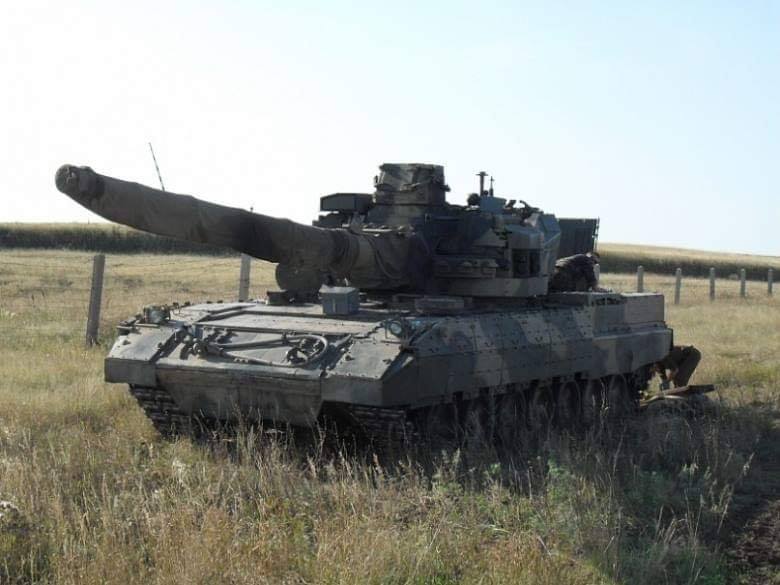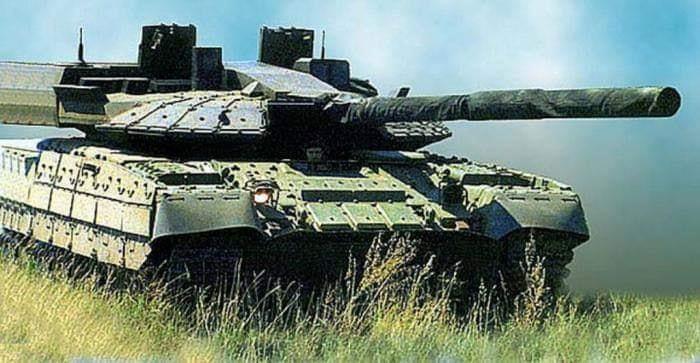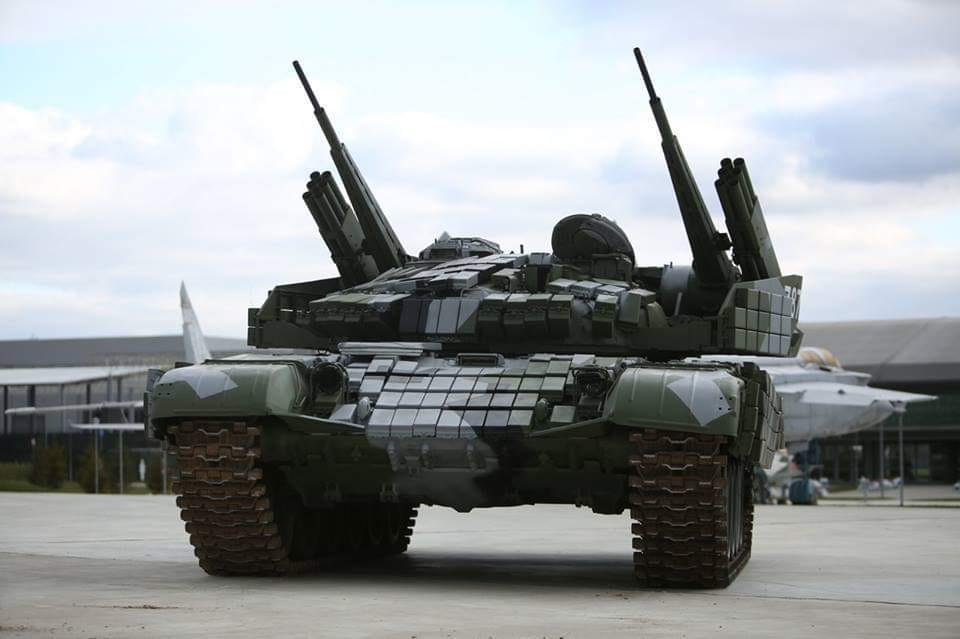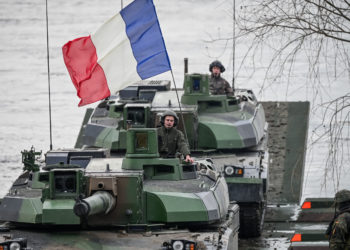The long Russian road to the next generation tank and HIFV. The Soviet Union and subsequently Russia, have long strived to come up with the next generation of main battle tank, the next brilliant idea that would give it the edge over tank designs from the West. Certainly, the Soviet Union has had its fair share of revolutionnary (or evolutionnary) ideas that subsequently either influenced or changed tank design for good:
- T-55 was the first tank with NBC protection fitted as standard.
- T-62 was the first tank with smoothbore gun capable of firing APDS.
- T-64 was the first MBT to be equipped with an autoloader, an automatic fire suppression system and composite armour.
- Drodz: First soft kill APS fitted to tanks (naval T-55A(D)).
- T-90: First tank serially produced with soft kill APS (shtora) fitted…
Yet, for many reasons, the road to the next generation MBT was never straight forward for Moscow. In the late 1980’s, The Soviet Union launched “Sovershestvovanie-88”, a plan to modernise the Soviet Union’s armed forces and weapon platforms. UralVagonZavod came up with the Object 195 MBT. Object 195 was meant to be a tank 2 to 3 times more survivable than its contemporaries. A crew of two would sit in an armoured capsule inside the tank hull. The turret being unmanned and operated remotely. It was also designed with an increased first hit kill probability, sporting a massive 152mm main gun (2A83) coupled with a coaxial 30mm autocannon (2A42). The design was a departure from the usual low-profile philosophy seen on previous Soviet tanks. This was mainly due to the extra space needed to accommodate the 152mm gun’s breech block. The suspension was hydro-dynamic to improve cross-country mobility and hit probability on the move. The engine was an A-85-3 turbocharged diesel unit producing up to 1,650BHP. Finally, a digital diagnostic system was to be installed in the crew capsule and datalink was also to be provided for better communication and situational awareness… The chassis was meant to be modular so as to be used by other platforms and the whole vehicle was designed to be easily upgraded over a period of 30 years, which was the projected service life of the vehicle. Object 195 was first mothballed in the early 1990’s when a cash strapped Russia went for the cheaper upgrade that was the T-90. The project was restarted in the early to mid 2000’s before being finally cancelled in favour of the T-14 Armata. All this, despite a prototype having been built and apparently successfully tested. It is, however, clear to see the legacy of the Object 195 in the current T-14, with many ideas having been carried across from one project to the other by UralVagonZavod.

But UralVagonZavod was not the only design bureau to compete in order to supply a tank for the “Sovershestvovanie-88” plan. The Leningrad Kirov Plant (current day St-Petersburg) came up with the Object 640 Black Eagle project. Object 640 was subsequently refined and developed by OmskTransMash. The prototype appeared in public in 1997 and was revolutionary by both Russian and Western standards: The driver’s position was moved back toward the center of the hull, in an armoured capsule. The tank commander and gunner were in the turret, but almost at floor level with their heads roughly where the turret ring is. The ammo carousel found in previous Soviet designs was gone and replaced by a huge ammo bustle at the back of the turret. The ammo bustle integrated a horizontal autoloader and blow-off panels that would have vented any explosion upward and sideways, away from the crew compartment. The resulting design enabled the tank to have a very low silhouette. Frontal arc and turret had spaced steel and composite armour covered by ERA, rumoured to be either Kontakt-5 or Kaktus. The side and rear armour was much thinner but the vehicle was fitted with Arena or Drodz-2 Active Protection System. The top of the turret also had thick armour and ERA bricks to protect from top-attack systems such as the Javelin.The setup was completed by the installation of the Shtora soft kill APS. The tank was meant to be equipped with a 1500hp gas turbine engine and a 125mm gun that could be upgraded to a 152mm gun. Sadly enough, the Russian state in the 1990’s had no money and the Omsk plant was even poorer: It went bust in 2002. Omsk was later incorporated into UralVagonZavod but money for the project was not available and it was shelved. The Black Eagle was no more. However, it is clear that UralVagonZavod had a good look into the Object 640 blueprints before starting work on the T-14 Armata… In fact, both Object 195 and Object 640 have left a legacy visible in all modern Russian tank designs, not only in the T-14: Armour packages, datalink, ammo bustle, soft and hard kill APS systems, armoured crew compartment/capsule, digital diagnostic tools and so on… Many of those systems have trickled down to current and latest T-72 and T-90 variants.

The road to come up with a special purpose/tank support vehicle wasn’t easy either! We all know the BMPT Terminator, but its roots also go back to the “Sovershestvovanie-88” plan! The Chelyabinsk Tractor Plant originally came up with two prototypes for such a platform: Object 781 and Object 782 (Sometimes called Object 781A and Object 781B). Both were based on a modified T-72B hull, with significant upgrades done to the lateral armour and both sporting a pair of 40mm grenade launchers mounted on the frontal glacis.
Object 781’s main armament was composed of two independent turrets, each mounting one 30mm Shipunov 2A72 autocannon with its own 7.62mm coaxial machine gun. The setup was completed with a launcher for a pair of Kornet or Konkurs ATGMs and a pintle mounted 12.7mm machine gun near the commander’s hatch. The crew was composed of 5 men.

Object 782 took a slightly different route as it came equipped with a turret mounting the same 100mm 2A70 gun as the BMP-3 with a 30mm 2A72 coaxial autocannon. A third 40mm grenade launcher was mounted on the turret.

Object 781 won the competition but the project was shelved in 1991 as the dissolution of the Soviet Union consumed all before itself. Soon after, the First Chechen war broke out (1995) and the lack of a specialised support vehicle made itself cruelly felt. Enters Object 787 Gadyuka BMPT: Terminator’s grand father!
Again, the brainchild of the Chelyabinsk Tractor Plant, the Viper was built on the chassis of the T-72AV and covered in Kontakt-1 ERA. It sported two 30mm autocanons, two 12.7mm heavy machine guns and two 7.62mm machine guns. With an additional two 68B20 rocket pods for good measure! The project was canned soon after due to a lack of budget, and this, despite some promising results on the firing range. However, despite the lack of funds, the idea of a HIFV (heavy infantry fighting vehicle) or Tank Support Vehicle never really went away…

UralVagonZavod presented its own Object 199 Ramka in 2000, armed with a single 30mm 2A42 and 4 ATGM launchers. this was a step in the right direction and work slowly progressed on that basis up until the production model of the BMPT Terminator was introduced in 2002!











